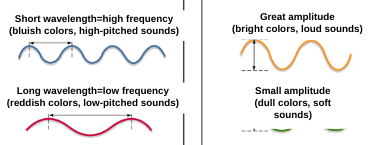AP Psychology UNIT FOUR REVIEW
Sensation: the brain recieving input from our senory organs
Perception: the brain making sense of the sensory input from our organs
Bottom-Up Processing: our sense receptors sending information to allow the brain to integrate the sensory information
Top-Down Processing: when we construct perceptions by drawing in our experiences and expectations
Prospagnosia: face blindness
Selective Attention: our attention is set to where awareness focuses while supressing other sensory information
Cocktail Party Effect: the ability to attend to one specific voice in a crowd of many voices
Inattentional Blindness: when we miss something that would seem obvious
Change Blindness: occurs when we do not notice a large change in stimuli
Transduction: the process of converting energy of a stimulus into a neural activity
When our senses take in a stimuli, transduction occurs outside of the brain so we can understand it.
Absolute Threshold: the amount of energy needed to produce sensation more than 50% of the time
Absolute Threshold applies to all of our senses. Anything below the threshold is subliminal.
Single Detection Theory: whether or not we detect a stimulus. Affected by psychological factors such as experience, expectations, motivations, and alertness. The theory states that our mental state affects our ability to detect stimulus.
Difference Threshold (Just Noticable Difference or JND): the minimum difference for a person to be able to detect the difference half the time (50%). It is the ability of a sensory system to detect changes and differences in between two stimuli.
Weber’s Law: the relationship between actual and percieved differences in stimulus intensity. (An amount relative to the initial stimulus)
Sensory Adaptation: our nerves cells fire less frequently and our senses tune out a constant stimulus
Subliminal Detection: below our threshold to consciously detect a stimulus. We can be primed, and this effects our subsequent choices
Perceptual Set: a mental dedispostition which affects what we do see (an example of top-down processing)
Perception of size depends on immediate context.
Photoreceptors (Rods and Cones: react to light by breaking down photopigments in the retina that allows us to see
Lasik: permanantly changes the shape of the cornea
Floaters: something that occurs with age where the gel inside the eyes pool together and creates a shadow
When light reaches the back of the retinas, it triggers a chemical change in the receptors, which are called rods and cones. The rods and cones in turn send messages to Bipolar cells and Ganglion cells, and onto the optic nerve.
Blind Spot: where the optic nerve leaves the eye
The Retina (Steps): 1. Light enters the eye, triggering a photochemical reaction in the rods and cones in the back of the retina. 2. Chemical reactions in turn activate the bipolar cells 3. Bipolar cells then activate the ganglion cells, the axons of which converge to form the optic nerve. This cells transmits information to the visual cortex (located in the thalamus) in the brain.
Vision: Energy, sensation, and perception. The physical properties of waves.

Young-Hemholtz Trichromatic (Three Color) Theory: the theory that there are THREE types of color receptor cones: red, green, and blue.
Opponent Process Theory: opposing retinal processes enable color vision. (When one color is ON, the other color is OFF).
Stroop Effect: the parts of the brain used for recognizing color and reading interfere with one another
Feature detectors exist in the visual cortex. They allow complex patternsto be recognized and they are small neural networks that are built through experience.
Supercells integrate these feature signals to recognize more complex forms such as faces.
Light waves → chemical reactions → neural impulses → features → objects
Paralle Processing: the building of perceptions out of sensory details in different parts of the brain
Gestalt (or whole forms): incoming information constructs patterns
Figure-Ground Perception: when something becomes the center of attention and the rest is indistinct (background)
Grouping: our brain takes incoming stimuli and puts it into a meaningful form. The three forms we do it in are proximity, continuity, and closure.
Proximity: we group nearby figures together
Continuity: we percieve sooth, continous patterns
Closure: we fill in the gaps of the image to complete the figure
Similarity: we gorup things together that seem alike
Visual Cliff: a test for depth pereption
Binocular (Both eyes) cues exist
Retinal Disparity: the two eyes have slightly different views, whic causes disparity
Convergence: the rotation of two eyes inward towards a light source
Monocular Cues can use either both eyes or just one eye
Relative Clarity: the closer we are the more objects we can see in detail
Relative Clarity: when seperate objects are the same size, the closer one is seen as larger
Texture Gradient: the clarity decreases the more distance is between
Linear Perspective: two parallel lines meet/converge in the distance/horizon
Interposition: when an object is partially obscured if distance increases
Relative Height: the object higher in our line of sight is percieved as father away
Shading: helps our perception of depth. objects further away will be darker
Perceptual Constancy: allows us to recognize an object even if our retina changes
Shape Constancy: the retinal shape changes but our brain still percieves the same shape
Size Constancy: the retinal shape changes but our brain still percieves the same size